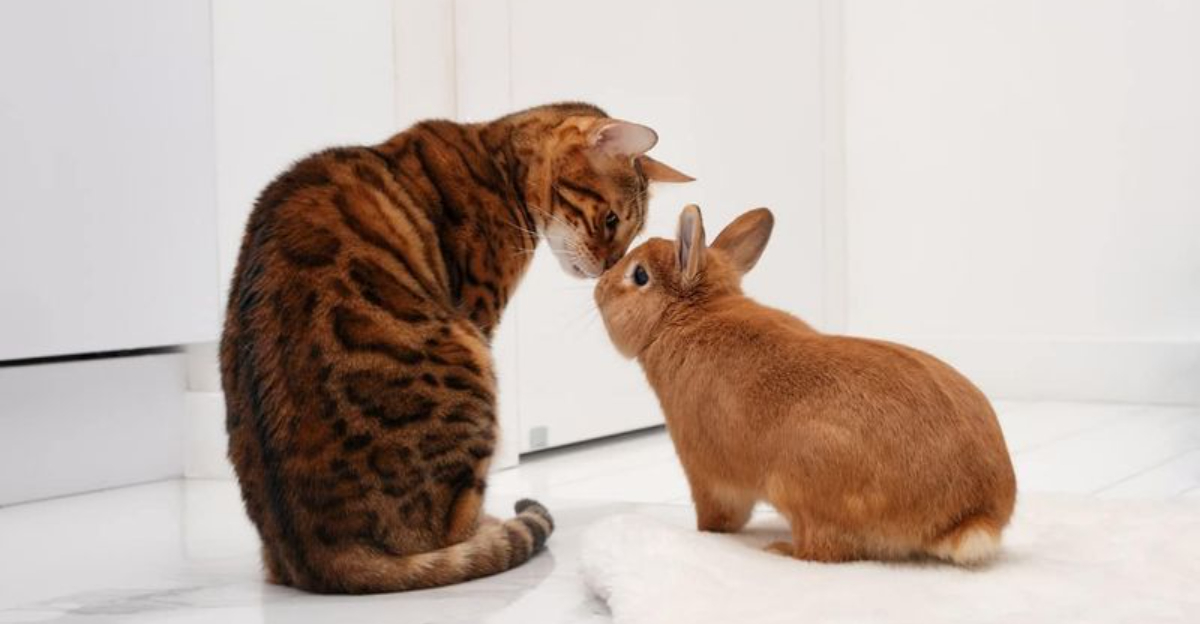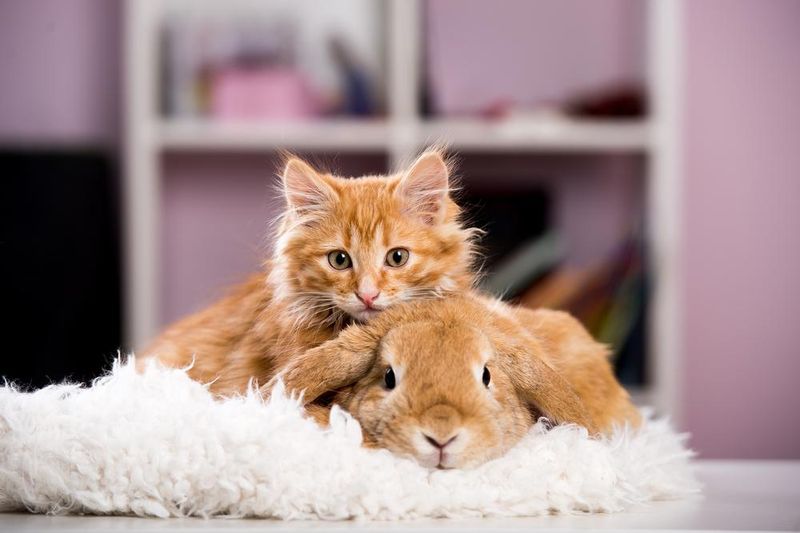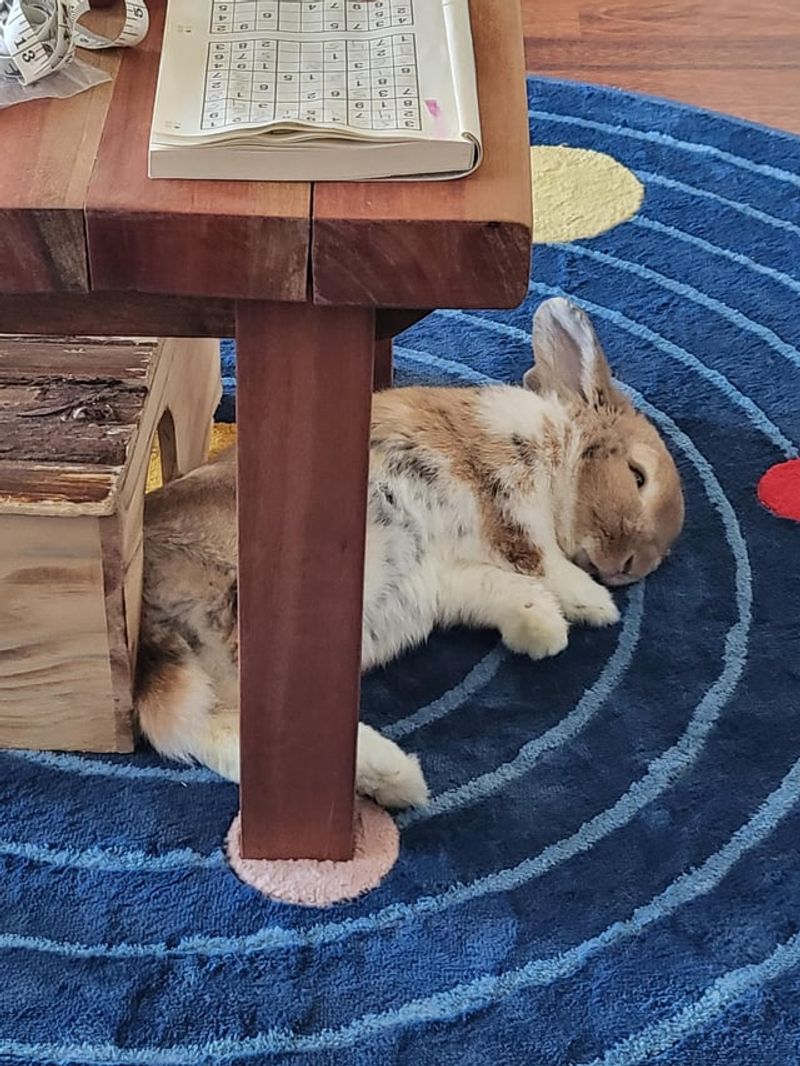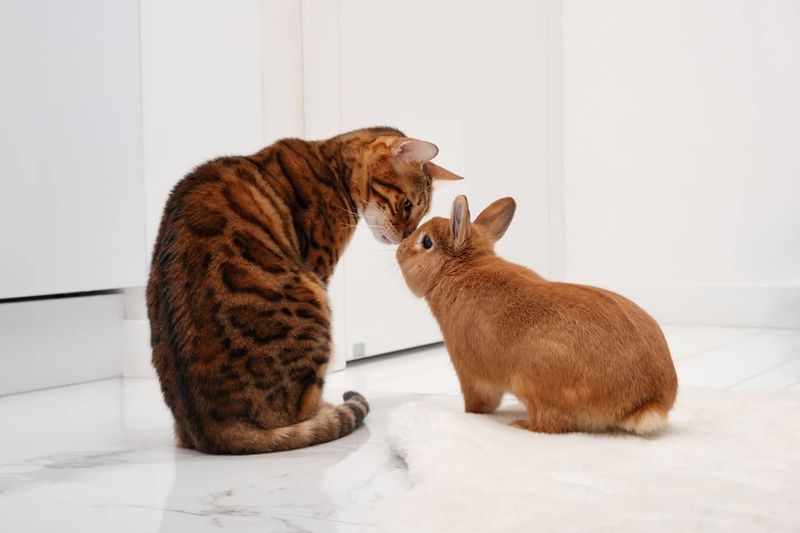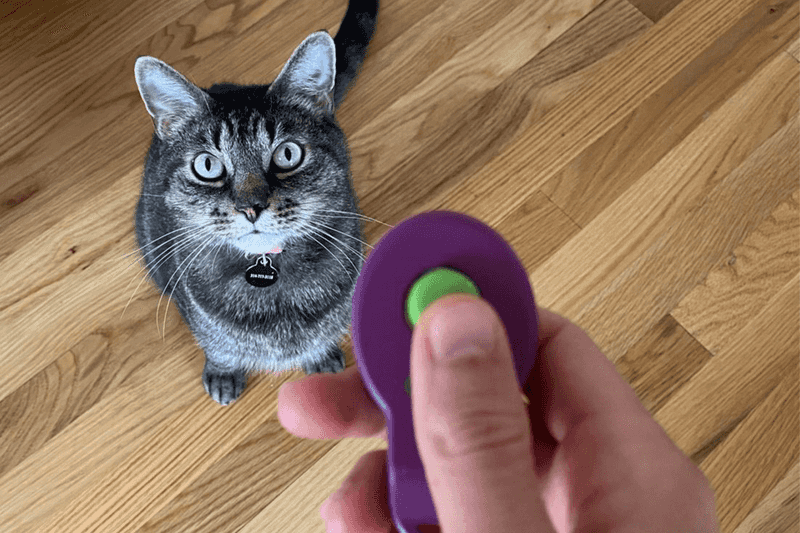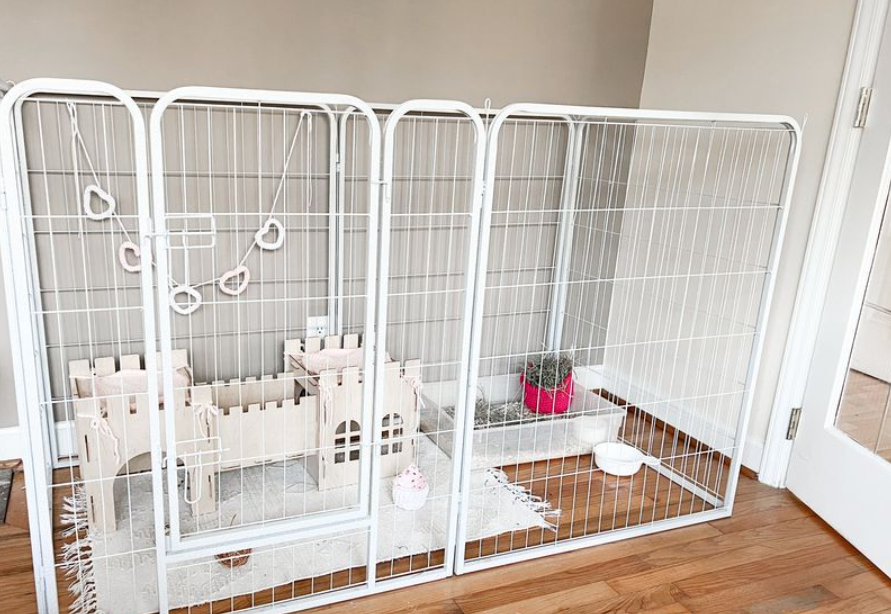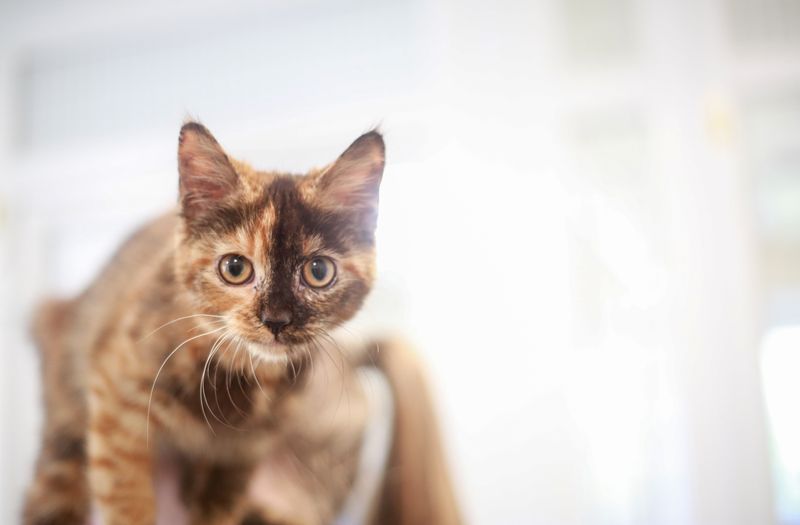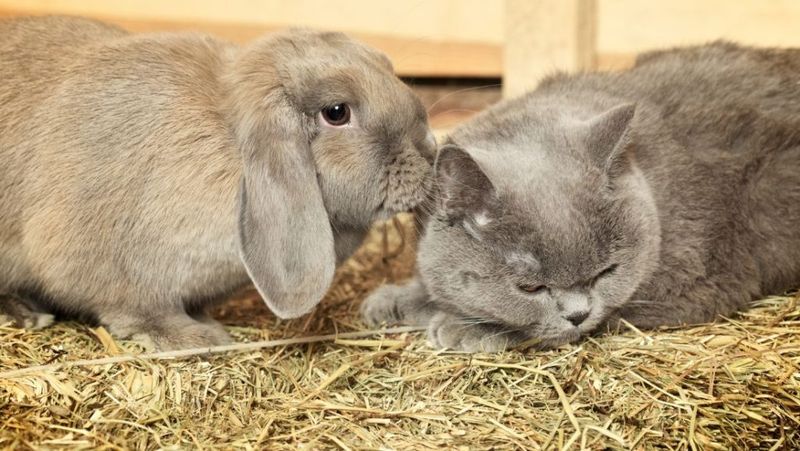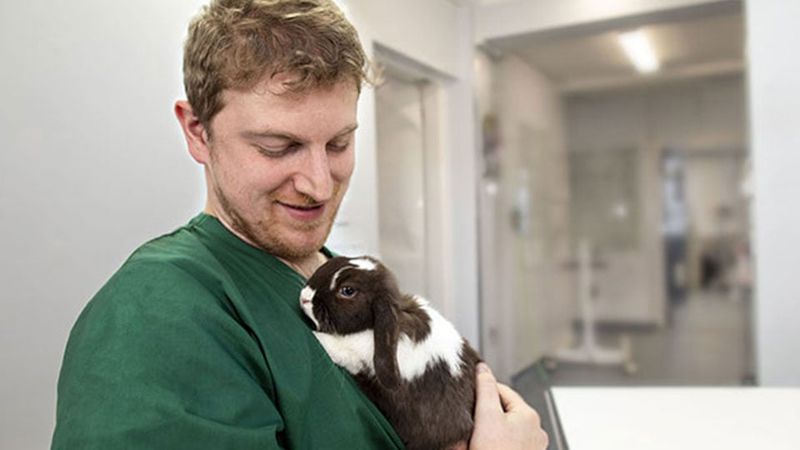📖 Table of Content:
Bringing a rabbit into a home that already has a resident cat is an exciting but delicate venture. While both animals can eventually coexist peacefully, their vastly different instincts and communication styles require thoughtful planning. Without the right preparation, the introduction can lead to stress or even danger for one or both pets.
Rabbits are prey animals that are acutely aware of potential threats, and cats—though domesticated—still retain their natural predatory instincts. Understanding these biological predispositions is crucial to navigating their initial meetings and building a relationship rooted in respect and calm. Skipping foundational steps or rushing the process can create lasting fear or aggression, which is difficult to reverse.
Fortunately, with patience, supervision, and the right setup, many cats and rabbits can live together harmoniously. Some even form unique interspecies friendships. This guide outlines the ten most important things you must know before bringing a rabbit home to your cat, helping you ensure a safe, stress-free transition for all parties involved.
1. Understand Their Instincts
At the heart of any cat-rabbit introduction lies the fundamental reality that one is predator, the other prey. It’s essential to remember that even if your cat is gentle and affectionate with people, their instincts around smaller, fast-moving animals can override training. Evolution has hardwired cats to stalk and pounce, while rabbits are built to flee and hide. When these instincts collide, fear responses can escalate rapidly if not managed. Your rabbit may become chronically stressed or even injure themselves trying to escape a perceived threat. Recognizing this dynamic early gives you the power to shape a calm, positive environment. Always prioritize the rabbit’s sense of safety when designing the introduction strategy.
2. Know Your Cat’s Personality
Different cats handle change and new companions in very different ways. A confident, laid-back feline may approach a rabbit with nothing more than mild curiosity, whereas a skittish or territorial cat could react with aggression or anxiety. Pay attention to how your cat behaves around toys, small animals outside the window, or visitors to gauge their temperament. Age also plays a role—kittens may be overly playful, while older cats could be set in their ways. Understanding your cat’s triggers and comfort zones will help you predict their response to a rabbit. Don’t assume your cat will instantly adjust just because they’re friendly with humans or dogs. A slow, personalized approach based on your cat’s nature is far more effective than a one-size-fits-all method.
3. Choose the Right Rabbit
Selecting a rabbit with the right disposition is just as important as considering your cat’s behavior. Bold, curious rabbits who don’t panic at sudden movement or noise often do better in homes with other animals. Avoid choosing a very young or tiny bunny, as their small size and fragility can make them seem more like prey and increase the risk of injury. Try spending time with different rabbits at a shelter to observe how they react to novelty and handling. Larger rabbit breeds like the Flemish Giant tend to be calmer and less skittish. Remember that temperament varies widely even within breeds, so base your decision on behavior, not just appearance. Ultimately, the rabbit should feel confident and secure in a multi-pet environment.
4. Separate at First
Upon bringing your rabbit home, resist the urge to introduce them immediately to your cat. It’s far safer to keep them in separate rooms for the first few days, allowing them to get used to each other’s presence through scent alone. You can rub a cloth on each pet and place it in the other’s space to start the scent exchange process. Let them sniff under a door or through a secure gate, but avoid visual contact at this stage. This slow exposure builds familiarity without fear or confrontation. Giving both animals a chance to adjust reduces the likelihood of territorial reactions. Eventually, their curiosity will outweigh their caution, setting the stage for a more successful face-to-face meeting.
5. Supervised Introduction Only
Once you’re ready to let them meet, do so with your full attention and a plan. Controlled introductions should take place in a neutral, rabbit-safe area, free of high perches or escape routes your cat might use to pounce. Ideally, have a second person present to help intervene if necessary. Allow your rabbit freedom to explore while keeping your cat gently restrained or distracted. Carefully observe both animals for signs of stress, such as freezing, tail lashing, or thumping. If tension rises, calmly separate them and try again later—never force the interaction. Repetition and patience will help them form positive associations with each other’s presence.
6. Train the Cat
Cats are trainable, especially with consistent redirection and rewards. Any time your cat starts stalking, swatting, or showing too much interest in the rabbit, use a toy or treat to shift their focus. Don’t punish them—this can create confusion and resentment—but do reinforce calm, respectful behavior. You might use a clicker or a sound cue followed by praise when your cat ignores the rabbit or sits quietly nearby. Over time, your cat will begin to associate good behavior around the rabbit with positive outcomes. It’s also helpful to offer high perches and vertical spaces where your cat can observe the rabbit from a distance. This gives them control over their environment while reducing the chance of unwanted close contact.
7. Rabbit-Safe Zone
Creating a designated rabbit-only area is non-negotiable. This space should be secure, comfortable, and inaccessible to your cat, especially during unsupervised hours. Include hiding spots, tunnels, and litter areas so your rabbit can relax and express natural behaviors without stress. You can use exercise pens, gates, or an entire room if possible. The presence of a safety zone reduces anxiety for your rabbit, knowing they always have somewhere to retreat. It also teaches your cat that there are boundaries and that the rabbit is not a toy or prey. Respecting this space reinforces mutual trust between your pets over time.
8. Watch for Stress Signs
Subtle behaviors can signal that one or both of your pets are overwhelmed. A rabbit who stops eating, hides excessively, or thumps frequently may be feeling threatened. Similarly, a cat who begins spraying, scratching more, or avoiding shared spaces could be under stress. Don’t ignore these cues—they are your pets’ way of communicating discomfort. Stress can escalate into illness or aggression if left unchecked. Introduce calming aids like pheromone diffusers or soothing background sounds if needed. The goal is to create a stable emotional environment for both animals. Monitoring mental well-being is as important as physical safety in successful cohabitation.
9. Never Leave Them Alone Together (At First)
Regardless of how well things seem to be going, unsupervised time together is a long-term goal, not a starting point. The risk of sudden conflict or misunderstanding remains high early in the relationship. Even a playful bat from a cat’s paw can seriously injure a rabbit. Trust takes time to build, and both animals need to consistently demonstrate calm and predictable behavior. Start with short, supervised visits and gradually increase the duration. If you ever feel unsure, err on the side of caution and separate them again. With consistency, safe solo interactions may eventually become possible—but never rush the process.
10. Health & Hygiene
Cleanliness and wellness play a major role in how your pets interact. Make sure both your cat and rabbit are healthy, spayed or neutered, and up to date on vaccinations or checkups. Regularly clean litter boxes and feeding areas to prevent cross-contamination or unwanted curiosity. Your cat may be drawn to rabbit pellets or hay, so secure the rabbit’s supplies in a way that limits access. Maintain grooming routines to reduce shedding and allergy risks for both animals. If either pet develops signs of illness, consult a vet immediately, as stress-related health issues can arise from poor hygiene or close quarters. A clean, healthy environment is the foundation for peaceful cohabitation.
